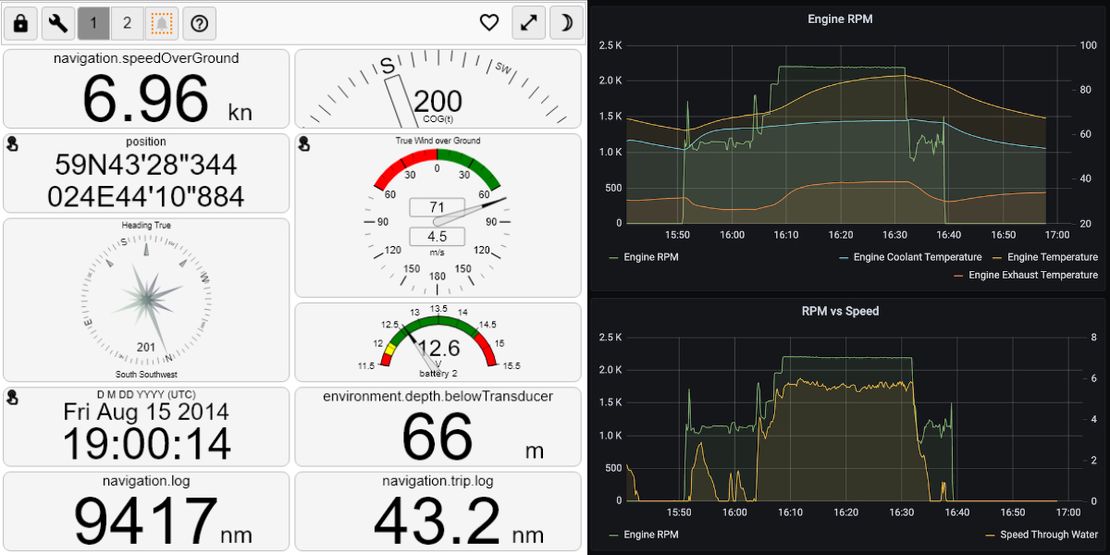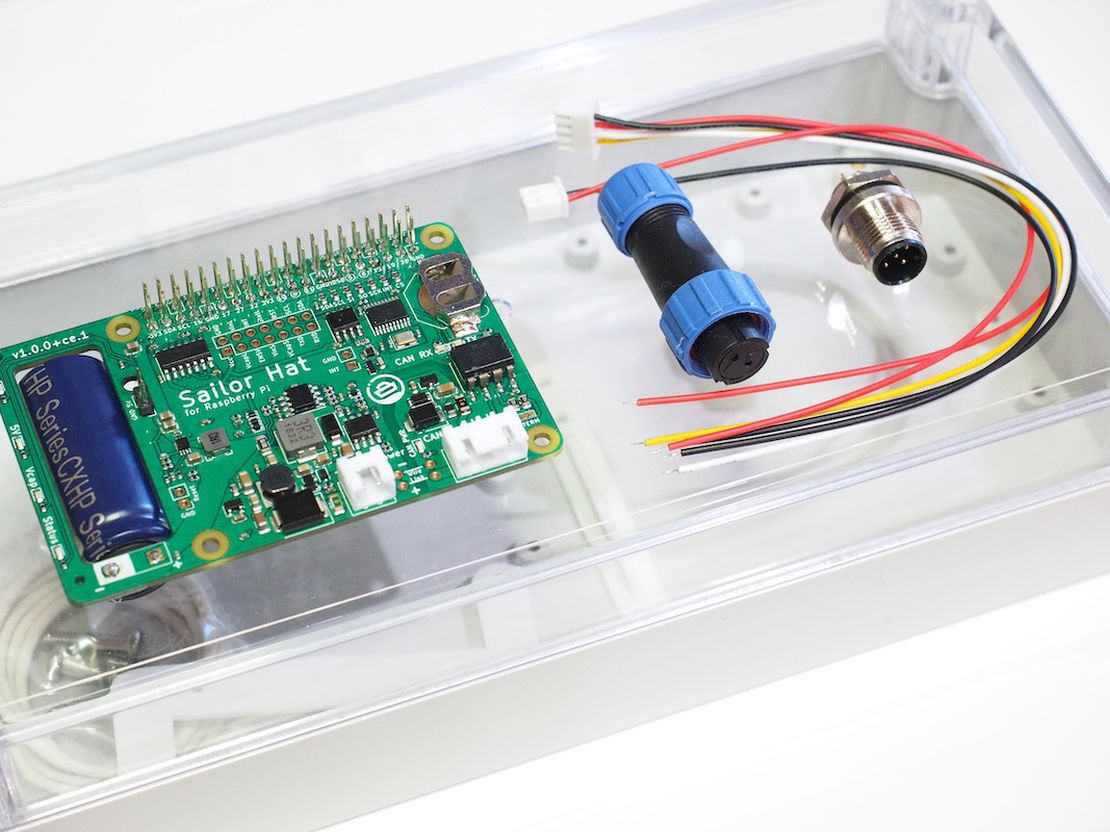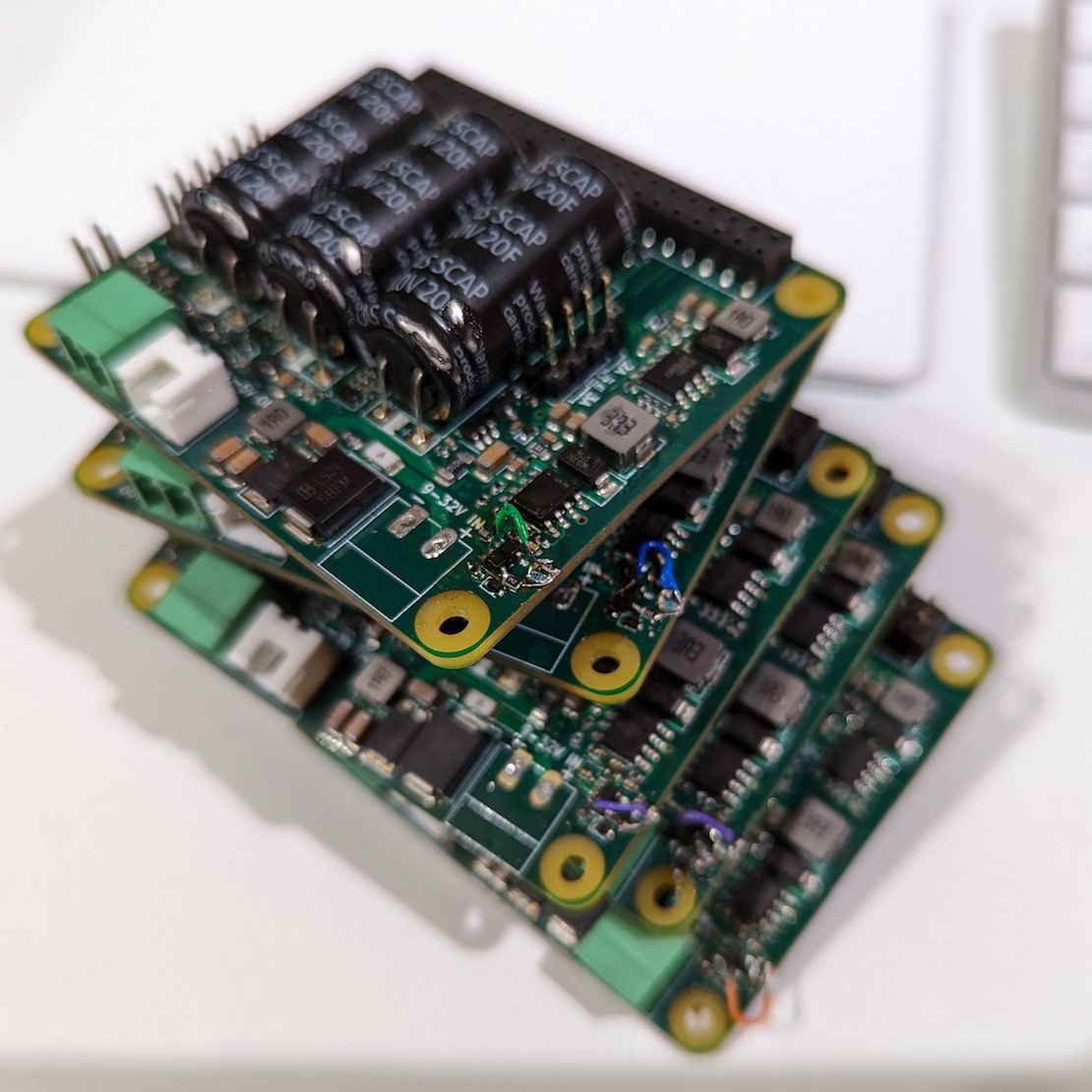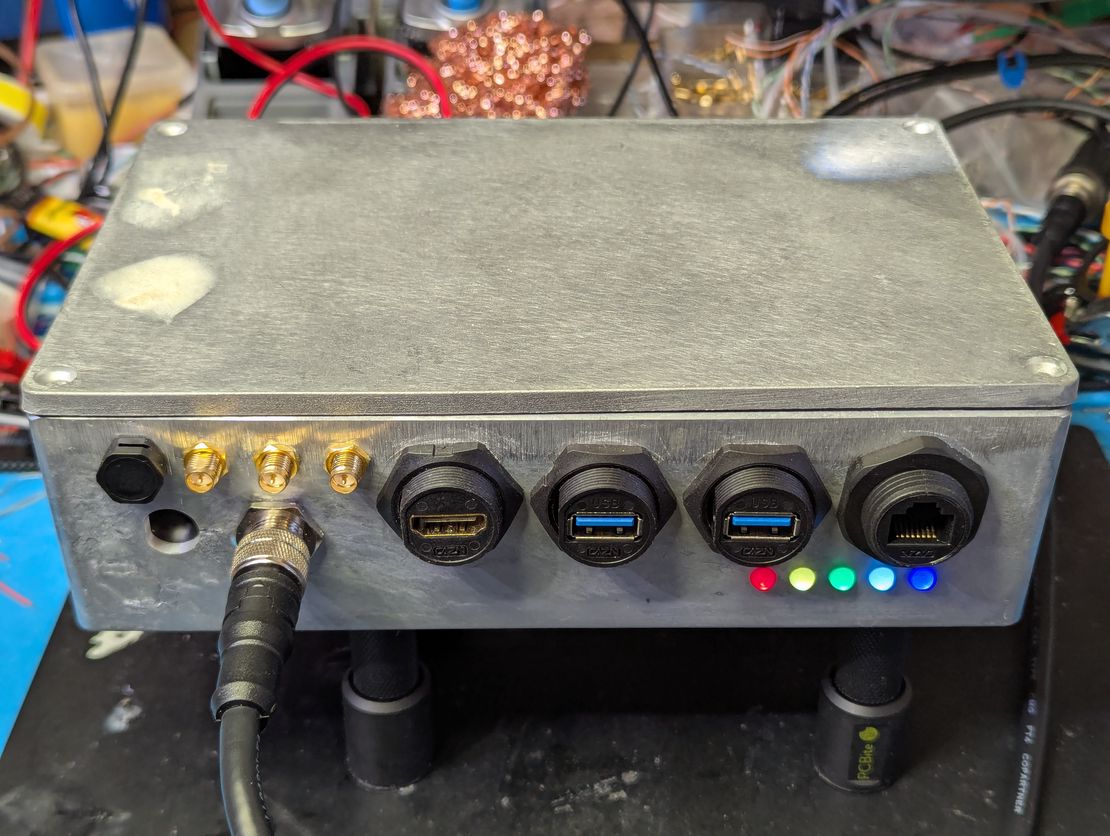
HALPI2 Prototype Update
- Matti Airas
- March 31, 2025
Table of Contents
I have been developing a new marine Raspberry Pi computer for the past few months. HALPI2 is a full-fledged Raspberry Pi Compute Module 5 (CM5) based custom carrier board packaged in a waterproof cast aluminium enclosure.
HALPI2 has a feature set well suited for a number of use cases, both offshore and onshore. Externally, the device is enclosed in a powder-coated diecast aluminium enclosure with dimensions of 200x130x60 mm (roughly 8x5.1x2.4 inches). The enclosure has a wall-mount option and, for ease of installation, has connectors only on one side. The enclosure also doubles as a heat sink, guaranteeing excellent thermal performance even in hot climates.
Pricing is not yet decided but it will be in the same ballpark as a comparably equipped HALPI computer.
There has been a great effort to provide good connectivity while keeping the enclosure waterproof. HALPI2 includes an external WiFi/Bluetooth antenna and has provisions for two more antennas. A standard NMEA 2000 connector can be used to interface with existing boat networks or other CAN bus networks. The device can be powered either via NMEA 2000 or a separate DC connector. There are four 20.8 mm holes that accept USB 3, HDMI, or Ethernet connectors. The default configuration will consist of one shielded Ethernet port, one HDMI and two USB 3 Type A connectors. Finally, three 13 mm holes are provided for additional cable glands or SP13 type connectors. By default, these holes will have blind plugs on them.

Rendering of the (hopefully) final HALPI2 enclosure hole pattern. Compared to the prototype enclosure, this one has three additional holes for user-defined functions. Top row, small holes: vent plug and antennas. Large holes: USB 3, HDMI and Ethernet. Middle row: DC power input and NMEA 2000. Bottom row, small holes: LED light pipe apertures. Medium size holes: cable glands or SP13 connectors for user-defined functions.
Going inside, HALPI2 includes a wide voltage range DC power supply that is protected against alternator load dumps and inductive voltage spikes. The power supply includes four supercapacitors that provide energy for safe shutdowns even when the power is cut. The supercaps also allow the computer to run continuously even during short brownouts and glitches like those caused by engine starter motors, bow thrusters or winches.
Beyond the power supply, the HALPI2 accepts a CM5 module, providing performance and capabilities identical to Raspberry Pi 5 - they both share the same CPU and auxiliary interfaces. CM5 modules are available with memory options from 2 GB to 16 GB. In addition to the optional built-in eMMC mass storage of the CM5 modules, the carrier board accepts NVMe SSD drives for vast internal storage. For compatibility with legacy use cases, a MicroSD card slot is also provided.
Additional board connectivity includes four 5 Gbit/s USB 3 ports, NMEA 2000 (CAN bus) and NMEA 0183 (RS-485) interfaces, a gigabit ethernet port, two HDMI ports and two DSI/CSI display/camera connectors. Other interfaces can be added using standard Raspberry Pi HATs.
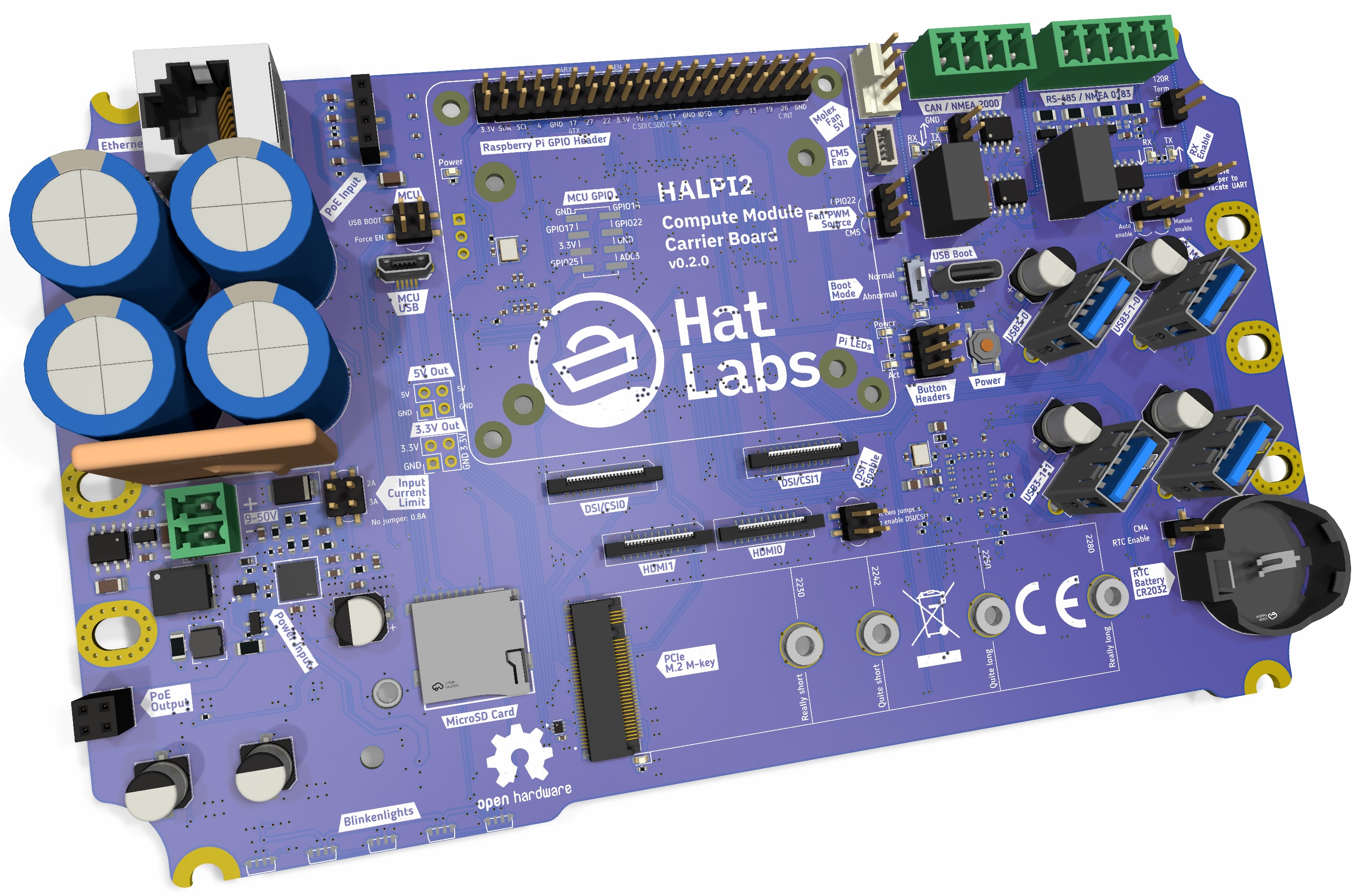
Rendering of HALPI2 PCB.

Cross section of the HALPI2 enclosure. The CM5 module is in direct contact with the enclosure bottom, ensuring extremely effective passive cooling.
I have received the first board prototypes and enclosure samples. Methodical testing of all subsystems revealed an unsurprising amount of issues that need to be fixed. The worst offender were the display connectors that had incorrect polarity on many of the differential pairs; a misunderstanding on my part. Getting the display connectors to work requires a new PCB order, all other subsystems I was able to get to work with some component replacements, an exacto knife and bodge wires. I will be making some minor design improvements to the power supply, however. Furthermore, I haven’t done any electromagnetic compatibility (EMC) pre-compliance testing yet, and those often unearth issues.
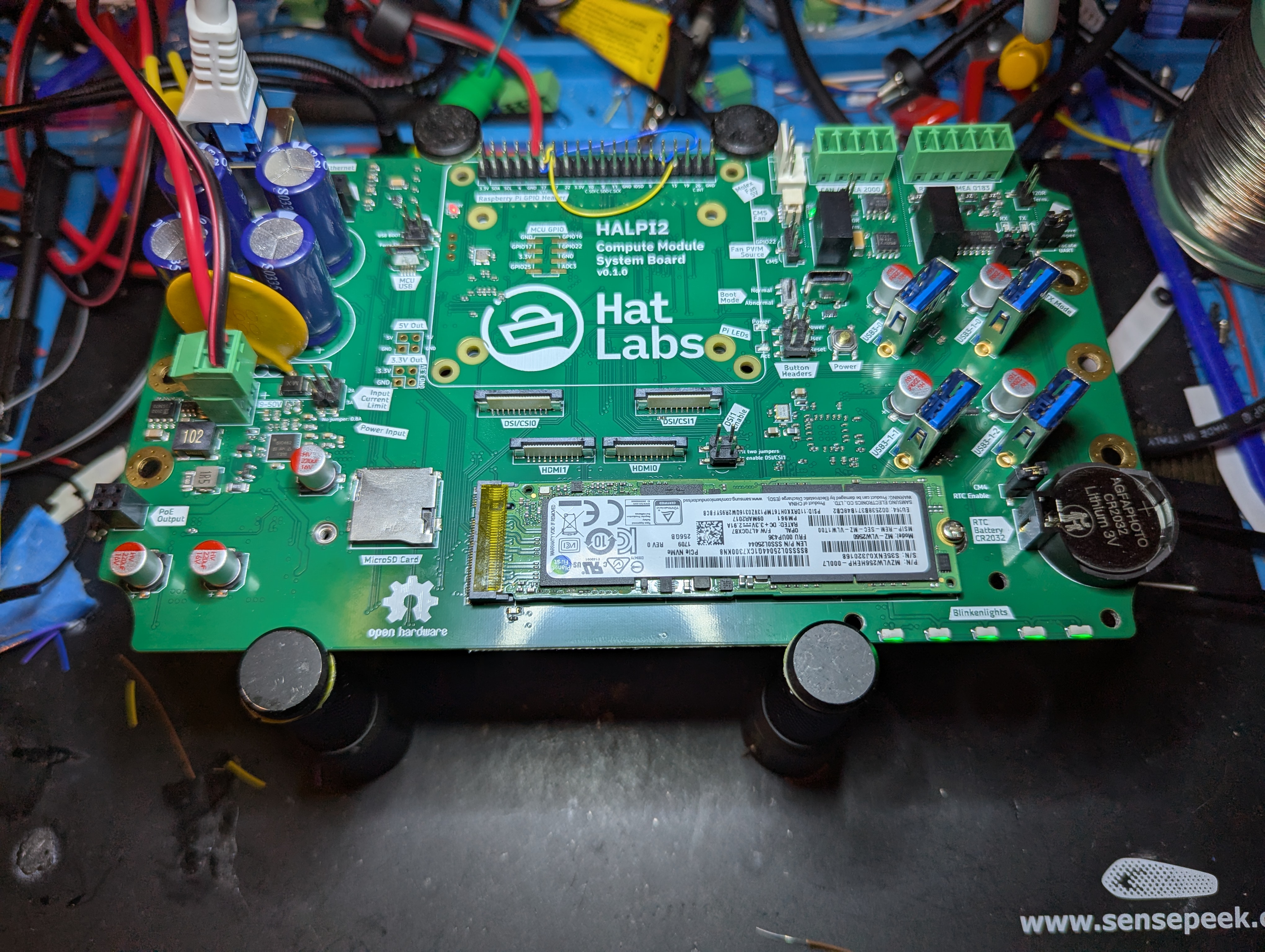
HALPI2 PCB prototype being tested. It is common for early prototype boards to accumulate a lot of bodge wires and other temporary fixes.
When should finished products be available then? I can probably place the next PCB proto order at the end of the next week. The assembled prototypes take 2-3 weeks to arrive. If the second prototype only requires trivial changes, the final PCBs could be available mid-May. The enclosures, cables, connectors, plugs, light pipes and other components also take a lot of time to source, but all of that is under control and final components should be available at the same time as the PCBs. If everything goes well, final products should then be available at the end of May.
